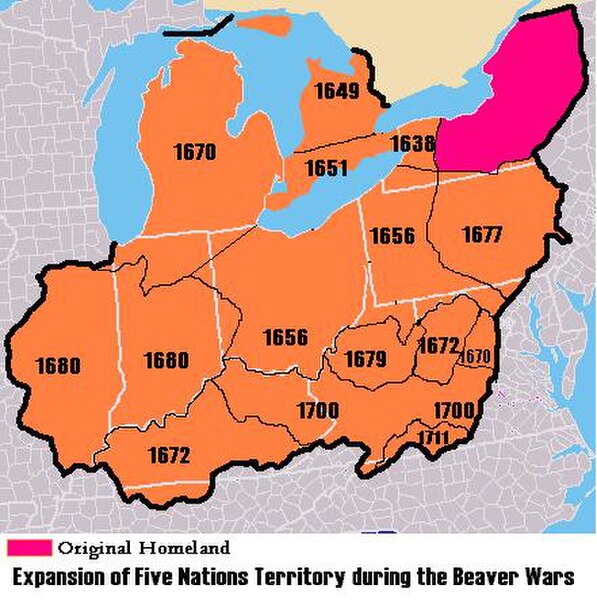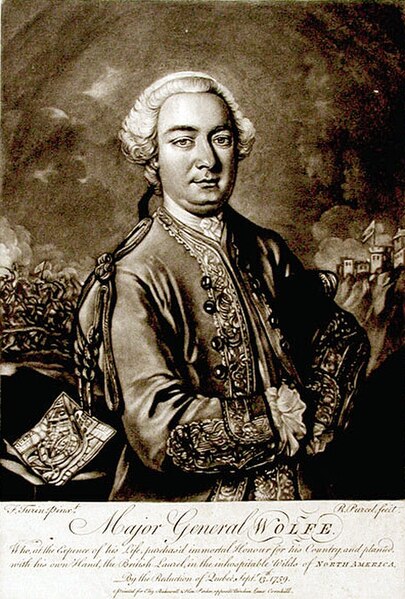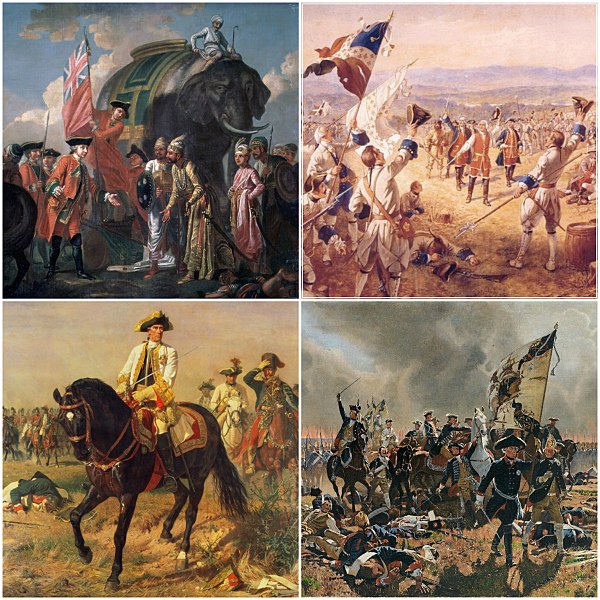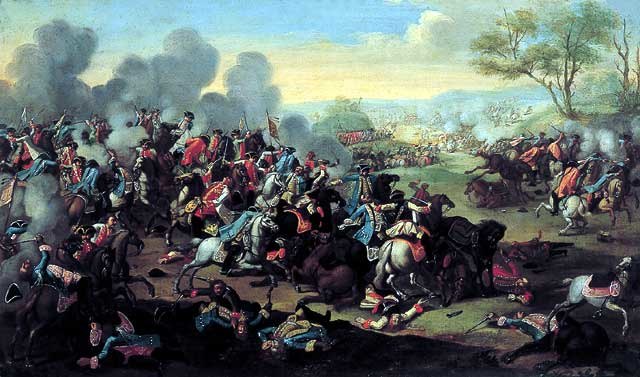The French and Indian War (1754–1763) was a theater of the Seven Years' War, which pitted the North American colonies of the British Empire against those of the French, each side being supported by various Native American tribes. At the start of the war, the French colonies had a population of roughly 60,000 settlers, compared with 2 million in the British colonies. The outnumbered French particularly depended on their native allies.
The coureurs des bois were French-Canadian fur traders, who did business with natives throughout the Mississippi and St. Lawrence watershed.
Iroquois expansion, 1711. By the mid-18th century, the Iroquois Confederacy had expanded from Upstate New York to the Ohio Country.
The Cherokee, c. 1762. The Cherokee were subject to diplomatic efforts from the British and French to gain their support or neutrality in the event of a conflict.
General James Wolfe, British commander
The Seven Years' War (1756–1763) was a global conflict involving most of the European great powers, fought primarily in Europe and the Americas. One of the opposing alliances was led by Great Britain and Prussia. The other alliance was led by France, backed by Spain, Saxony, Sweden, and Russia. Related conflicts include the 1754 to 1763 French and Indian War, and 1762 to 1763 Anglo-Spanish War.
Clockwise from top left: The Battle of Plassey (23 June 1757) The Battle of Carillon (6–8 July 1758) The Battle of Zorndorf (25 August 1758) The Battle of Kunersdorf (12 August 1759)
Prussian Leibgarde battalion at Kolín, 1757
British raid on French settlement of Miramichi (later called Burnt Church, New Brunswick), 1758
The Battle of Kolín in 1757 in Bohemia (the site is now in the Czech Republic)








